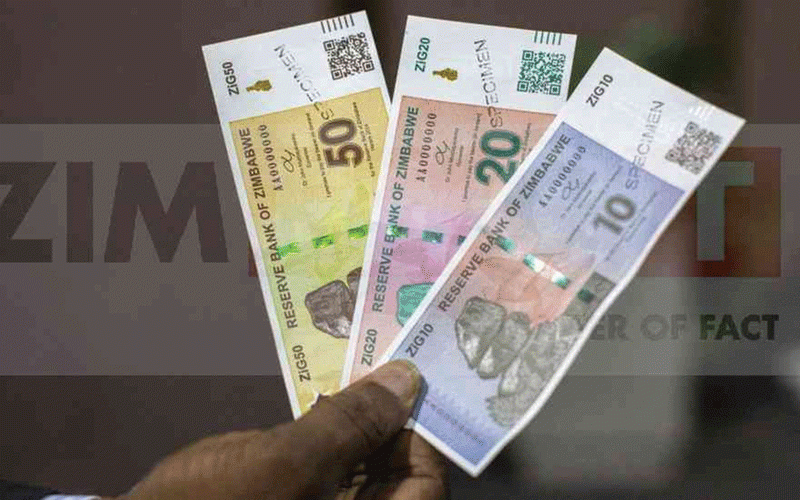
The year 2023 for Zimbabwe was a tale of two halves, the first one which was filled with optimism and dreams, typical of any country that is headed for a general election.
Bullish projections of economic performance were being thrown around from all angles. The government expected the economy to grow by 3,8% and the expenditure gap to be limited to 1,5% of Gross Domestic Product (GDP).
Gold production, one of the country’s biggest foreign currency generators, was targeted to get to 50 tonnes, together with a US$12 billion-dollar mining revenue target. The mining and quarrying sector was supposed to grow by 10,4% buoyed by strong commodity prices.
Who will forget the measures to stabilise the exchange rates that were put in place by the authorities? At some point, we were all made to believe that the foreign currency exchange rate was now fully market-determined. The convergence between the official and parallel market rates became the anthem.
The other half wasn’t as much optimistic as the first one and closer to reality. As an economy, we started realising that the targets would not be met and that election spending was not as great as expected. In addition, we realised that the government might be not as well up financially as we all thought, hence a cocktail of tax measures.
In this article we will have a rundown of the year, looking at areas where the author believes are critical in influencing the activity in the economy. This article will highlight areas of the achievements, together with the missed targets.
Currency
Typically, currency shouldn’t be a key component to assess when analysing the performance of the country, but in Zimbabwe currency has become central to everything.
- Addressing unfair trade key to transforming African food systems
- Urgent economic structural transformation necessary
- Residents finger ZETDC employees in cables theft
- New perspectives: Building capacity of agricultural players in Zim
Keep Reading
The author is of the view that this is one of the areas in which as a country we underperformed, notwithstanding the efforts that were undertaken to stabilise the exchange rate. Officially the currency lost over 85% of its value and this is slowly becoming a norm year in and year out over the past few years.
As a consequence, the portion of the economy that uses the local currency dwindled from around 25% early in the year to less than 10% now.
Perhaps the takeaway from the whole currency issue in the year was the extension of the multi-currency regime. Although this will likely speed up the death of the local currency, it helps with stability and allows economic agents to plan. Also, during the year, the monetary authorities introduced digital gold coins, which will help with the store of value function together with a transactional component. However, it seems the only thing the market has confidence in at the moment is the greenback.
Capital markets
The year 2023 wasn’t a great year for the capital markets either. From a capital raising perspective, West Prop Holdings, which is listed on the Victoria Falls Stock Exchange (VFEX) had a 0,14% subscription for their target ordinary shares listing, whilst Revitus REIT raised 18% from the public.
Besides the Econet and EcoCash rights issue exercises which were underwritten offers, Truworths also carried out a similar exercise during the year. The activity of the stock markets wasn’t impressive either. The effects of SI 103 A of 2022 are still being felt on the exchange as investors have dampened spirits manifesting in lower turnover.
Agriculture
Although not the biggest contributor to the country’s GDP, agriculture is the source of livelihood for most subsistence farmers in the rural parts of Zimbabwe.
The 2022/23 agriculture season received above average rainfalls and even the grain imports decreased during the year. The sector was projected to grow by 4% and I wouldn’t be shocked when the results are presented, if it exceeded that growth target. The winter cropping season was also a success with records being set.
Construction
The construction industry was targeted to grow by 5,8% at the back of continuing infrastructure projects and in my opinion performed according to expectation, if not better. Several wins were underscored during the year including the commissioning of the airport and Hwange 7 and 8 amongst others whilst the Masvingo - Beitbridge highway is almost complete. Even from a private sector point, construction activities remained resilient throughout the year 2023 and were arguably one of the most productive sectors of the year.
Energy and power
I think it is fair to conclude that from a consumer’s point, the electricity situation in the country overall during the year was below average. A number of listed companies reported that the cost of alternative electricity was amongst the cost drivers during the year, as they operated using generators. From the production point, Hwange 7 and 8 expansion projects were commissioned during the year, adding 600 megawatts to the grid. According to the Zimbabwe Investment Development Agency, ZIDA, over 700 million was expected to be invested in the energy sector by the end of the first half of 2023.
Trade
For the 11 months to November, Zimbabwe’s exports were US$6,7 billion, with gold contributing US$1,6 billion towards that number while tobacco exports were slightly above a billion. Imports, however, for the same period were US$8,4 billion resulting in a US$1,7 billion trade deficit.
The bulk of import bill was spent on petroleum oils and light motor vehicles, which combined amounted to US$1,65 billion.
Compared to 2023, for the first 11 months, exports were US$5,9 billion, representing a 20% increase. However, imports also took a 6% jump from US$7,9 billion for the same period in 2022.
Overall, the year, just like any other year, was a mixed bag with wins and losses. Peculiar to 2023 were some of the bullish and overambitious expectations that were set and talked about but divorced from reality.
Hozheri is an investment analyst with an interest in sharing opinions on capital markets performance, the economy and international trade, among other areas. He holds a B. Com in Finance and is progressing well with the CFA programme. — 0784 707 653 and Rufaro Hozheri is his username for all social media platforms.










